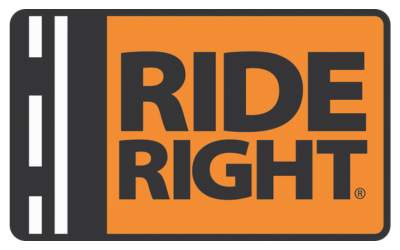The Ride Right program is built around the concept of the 10 Pillars of Bike Safety. These pillars are the foundation of safe and responsible bicycling, both on and off the road. Each pillar represents a key aspect of bike safety that riders should be aware of and practice in order to minimize risk and stay safe. Here is a breakdown of each of the 10 pillars:
- The RIGHT stuff: It’s important to have the right equipment for safe cycling, such as a well-maintained bike, a properly fitted helmet, and appropriate clothing.
- The RIGHT gear: In addition to the basics, it’s also important to have the right accessories, such as lights and reflectors for visibility, and locks to secure your bike when not in use.
- The RIGHT communications: Clear and effective communication with other riders and drivers is crucial, whether it’s using hand signals to indicate turns or using a bell or horn to alert others to your presence.
- The RIGHT riding: Knowing how to ride safely and responsibly is key, including maintaining a steady pace, keeping a safe distance from other riders and vehicles, and being aware of road conditions.
- The legal RIGHT: Knowing and following the rules of the road is not only important for your own safety, but also for the safety of others.
- The RIGHT frame of mind: A positive and responsible attitude is important when cycling, including being patient, respectful, and considerate of others.
- The RIGHT abilities: Understanding your own abilities as a rider and taking appropriate precautions is key to safe cycling, including staying within your limits and avoiding risky behaviors.
- The RIGHT attitude: Being alert and attentive while cycling is crucial for staying safe, including paying attention to your surroundings, avoiding distractions, and staying focused.
- The RIGHT attention: Keeping your bike and equipment in good condition is important for both performance and safety, including regularly maintaining and inspecting your bike and gear.
- The RIGHT condition: Taking care of yourself as a rider is also important, including staying hydrated, eating properly, and getting adequate rest and recovery.
By understanding and practicing these 10 pillars of bike safety, riders can significantly reduce their risk of accidents and injuries while cycling.
